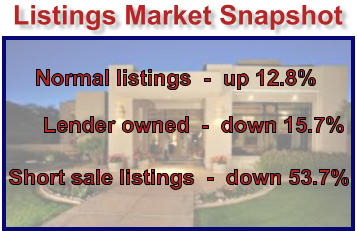When demand started declining near the end of 2013, the inception of the buyer’s market had begun. Market watchers held their breath praying for demand to show up – fearing without demand jumping the pile up of inventory that typically occurs in the back half of the year would become an avalanche – but the market shifted again. The normal pile-up of supply failed to show up in significant numbers. To date, 2014 has proven to be a bit of a head scratcher. Where does that leave us now?
The best summary of the market comes from our favorite pundit Michael Orr of the Cromford Report: 
“The total number of active listings has dropped every day since May 31. Although demand remains very low by normal standards, the lack of a build up in inventory is a slightly encouraging sign for sellers….. Phoenix and Scottsdale have seen a 6% fall in active listings over the last month, while Surprise is down 10%. Chandler is the only major city showing a large gain in inventory with 9% more than one month ago.
As is often the case for this time of year, we see massive drops in inventory for Sun Lakes (down 23%), and for Sun City and Sun City West (both down 13%)
Sellers would dearly like to see a more balanced market than we have experienced in the last 8 months. If demand won’t increase, then a reduction in supply (after adjusting for seasonality) will have the equally welcome effect of improving their negotiating power.
The market balance is still weighted towards buyers, but not quite as much as in April. Demand fell back again in May after some improvement in April, but supply dropped a little faster during May than we expected and this has compensated for the weakening demand. Overall we are not seeing much change over the last few months and we are still eagerly waiting for some more significant developments, one way or the other. Boring is the worst situation if you are in the analysis and commentary business. Luckily Phoenix rarely stays boring for long.
Some misguided souls are still blaming the weak demand on interest rates. Given that rates have moved lower over the last few months and are not far about historic lows, this does not hold water. The best I can say about that point of view is that it is more credible than blaming the weather, especially across the southwest where demand has fallen hardest.
Now we are seeing an increasing number of commentators adding to the discussion of what we believe are more realistic causes of the continued weak demand for homes to buy, not just in Phoenix but across much of the country:
- low participation by first time home buyers
- the inhibiting effects of massive student loan debt
- millennials preference for the flexibility of renting
- the foreclosure wave in 2008 through 2012 which has introduced a new sensitivity to the fact that home ownership can sometimes be financially hazardous
- a large tranche of former home owners who have not yet repaired their credit enough to re-enter the market
- low rates of household formation, especially among 20-30 year-olds
- a growing wealth gap causing stronger demand for high end homes but leaving large numbers of people renting for the foreseeable future
…With demand having been so weak over the last 10 months it is natural to assume that the market might see an improvement in demand as the next step. This might be dampened by the usual seasonal increase in supply that tends to occur in the second half of each year. However, the current readings suggest the opposite of what we might have expected. Demand is actually weakening a little compared with last month. On the other hand supply is also failing to show any strength and is now fading to a greater degree than demand. In other words the market for homes to buy is contracting in size….â€
So again, we ask ‘where does that leave the valley’s real estate market at the moment?’ We remain in a gentle buyer’s market. However, a tip in either demand or supply will change the market dynamic. History says demand can increase rather rapidly – especially if buyer’s find a reason to buy (higher rents, lower interest rates, flat or declining prices, etc.) Will it? We will keep you posted as the future unfolds.






